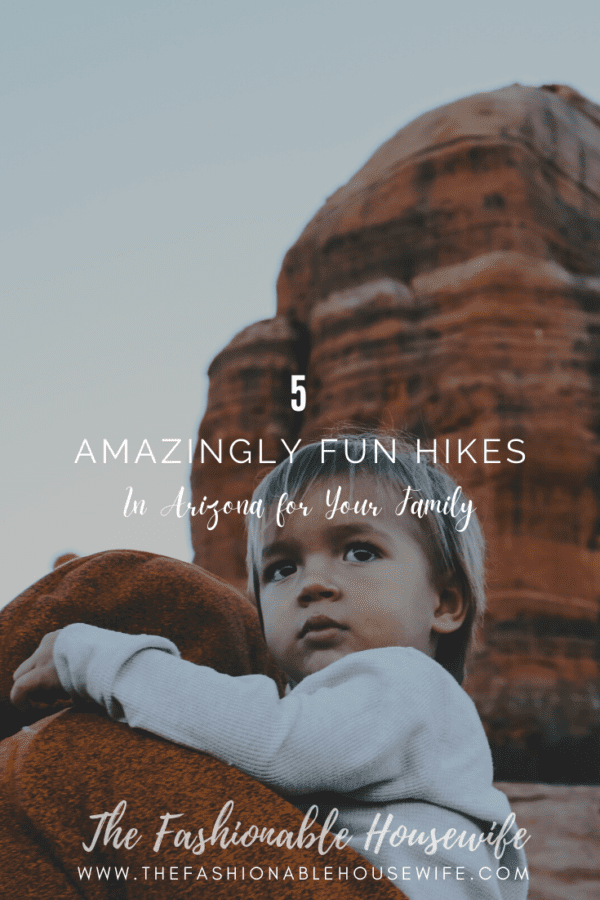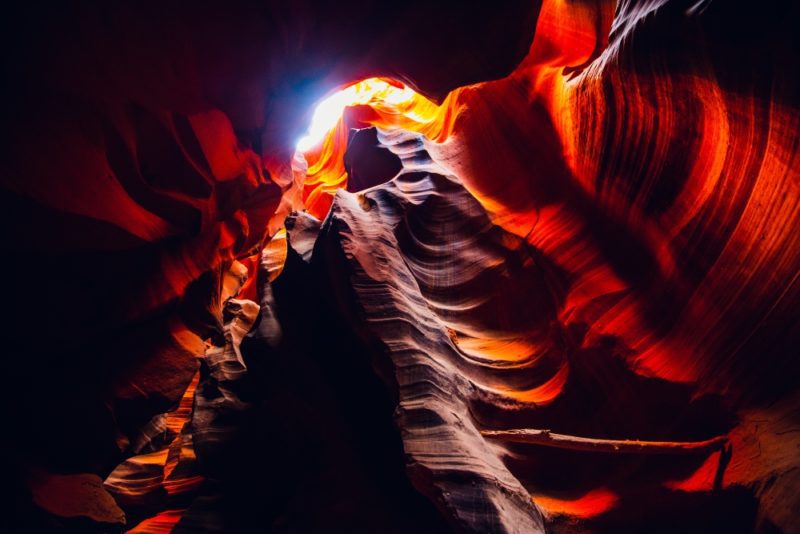
The great state of Arizona offers terrific hiking from north to south and in all seasons. Whether you want to view the night sky or study the formation of a slot canyon, you will find a way to enjoy this beautiful place.
Bell Rock Trail
If you’re looking for shorter options, such as when hiking with small children, check out Sedona. The views around Sedona are some of the best in Arizona. If you’re hiking with little adventurers, try the Bell Rock Trail. This trail is only about three-quarters of a mile and only includes a 210 foot elevation gain. However, the views of Bell Rock are consistent and lovely all the way up.
For those hoping to go a bit further into the wild, there are many trails in the Sedona area that are bicycle friendly. If you fly into Sedona, you can find spots to rent bicycles for the day if you want to get further out into the wild without overloading little legs.
Cathedral Rock
A slightly longer hike in the Sedona region will take you to Cathedral Rock. As possible, try to schedule this so you can stop at the end of the trail and enjoy the sunset. This hike only has a 925 elevation gain over 1.7 miles; the trip home will be easier and the views will be incredibly worth your climb.
If you’re interested in learning to rock climb and rock scramble, this is a great hike to test out your gear. For example, these hikes are an ideal time to fit a soft backpack that will hold close to your core while you climb the rock along the trails around Sedona. Being able to carry the gear necessary for longer hikes or camping trips in a pack that won’t bounce around or throw you off-balance as you climb and hike. Additionally, it will take time to learn to pack your gear in a balanced way.
To start, it’s important to get in the habit of taking a hiking rest every hour when you’re on the trail. In your pack, you can carry
- water
- sunscreen
- extra socks
Get in the habit of sitting down, taking off your shoes or hiking sandals, and airing out your feet. With this habit in place, you can learn to protect your feet on longer hikes in any terrain.

Antelope Canyon
If you want to hike the Antelope lower or upper canyon, you will need a guide. These are slot canyons and the risk of getting lost is real; there are no square corners in these beautiful, wavy canyon walls.
The upper canyon is much deeper. The climb into and out of this canyon may make this choice a challenge if you are not a consistent hiker; for those concerned about having the strength to enjoy the upper canyon, the Lower Antelope Canyon also has a lot to offer hikers and anyone who loves to take photos.
When traveling through many areas of Arizona, do be aware that the rules you need to follow may be imposed by Native American tribes as well as the National and State Park organizations. The desert is a very delicate ecosystem; if there are trails that you’re not allowed to use or trails that require a guide, these regulations are in place either to protect the ecosystem or to protect you.
Antelope Canyon was formed by water forcing its way through Sandstone. Your guided hike in Antelope Canyon may be delayed in the event of rain; flooding is a serious risk in these canyons. Stick with your guide!
SP Crater
Your SP Crater hike can be done after dark. This trail is only two miles long and the elevation gain is under 350 feet. Because Flagstaff is on the list of Dark Sky Cities, you will want to gear up properly for your SP Crater hike.
When the sun goes down in Arizona, the temperature can drop quickly. Again, this is a great time to get in some practice for longer hikes and perhaps even a camping trip or two. Make sure everyone has
- a water container
- moisturizer; dry desert winds can lead to chapped lips and flaky skin
- something fleece to capture heat against the skin
- a windbreaker with a hood in the event the breeze gets chilly
Flagstaff is at a higher elevation than the Arizona desert that many people first visualize when they think about this remarkable state. You will experience pine trees, cool nighttime breezes, and possibly snow if you are visiting Flagstaff in winter. The higher you get along the crater trail and the lighter the tree cover grows, the more wind you will be exposed to.
Wildcat Trail
Wildcat Trail is in Monument Valley. It’s important to note that many of the trails in Monument Valley are on Navajo land. You will need to hire a guide for many of these trails and there may be a permit and a fee requirement to gain unregulated access.
However, Wildcat Trail is one of the few hikes in this region that does not require a permit or a guide. This is a 4 mile loop trail that will take you up just under 400 feet in elevation. On this trail you can get very close to many of the rock formations; do make sure that you are aware of what you can and cannot touch, and the best way to avoid any hazards.
This trail can be a wonderful way to practice your snake avoidance step. Snakes in the desert have little to no interest in humans; in fact, they are generally as excited to avoid you as you may be to avoid them. Walk with a heavy tread when on the trail. Before you move to the rocks, carefully study the spaces you’re going to be walking; if the day is just warming up, the snakes may also want to be warming up and you may actually see some sunning themselves.
If you actually should hear a rattle while on a desert hike, stop your steps and look around you. As a general rule, the snake will have moved away from you first. If you see nothing, turn around and go the other way.
Arizona offers many family-friendly ways to enjoy the outdoors. A short hike with little elevation gain can be a wonderful way to help your children fall in love with the desert southwest and practice safe hiking techniques.



